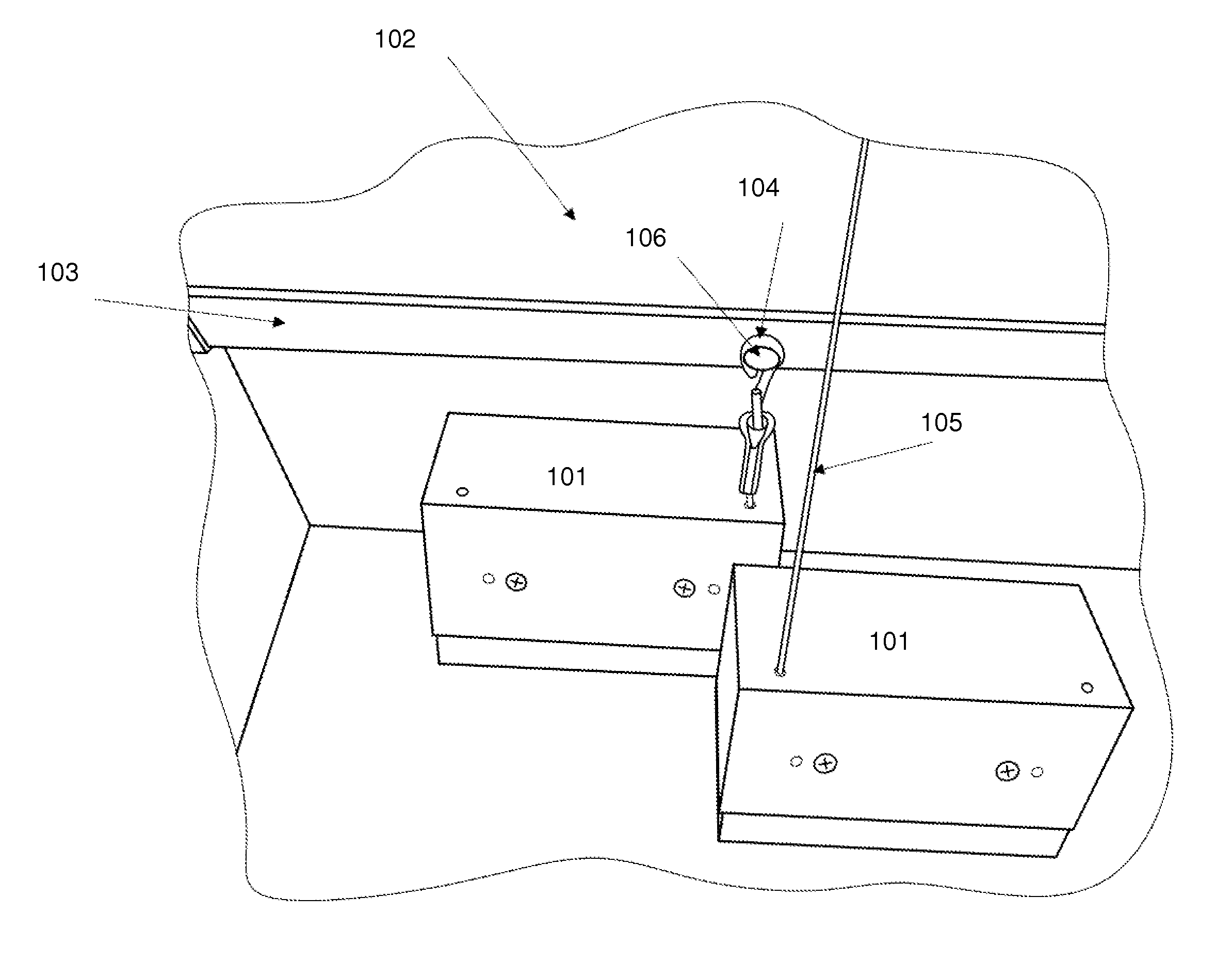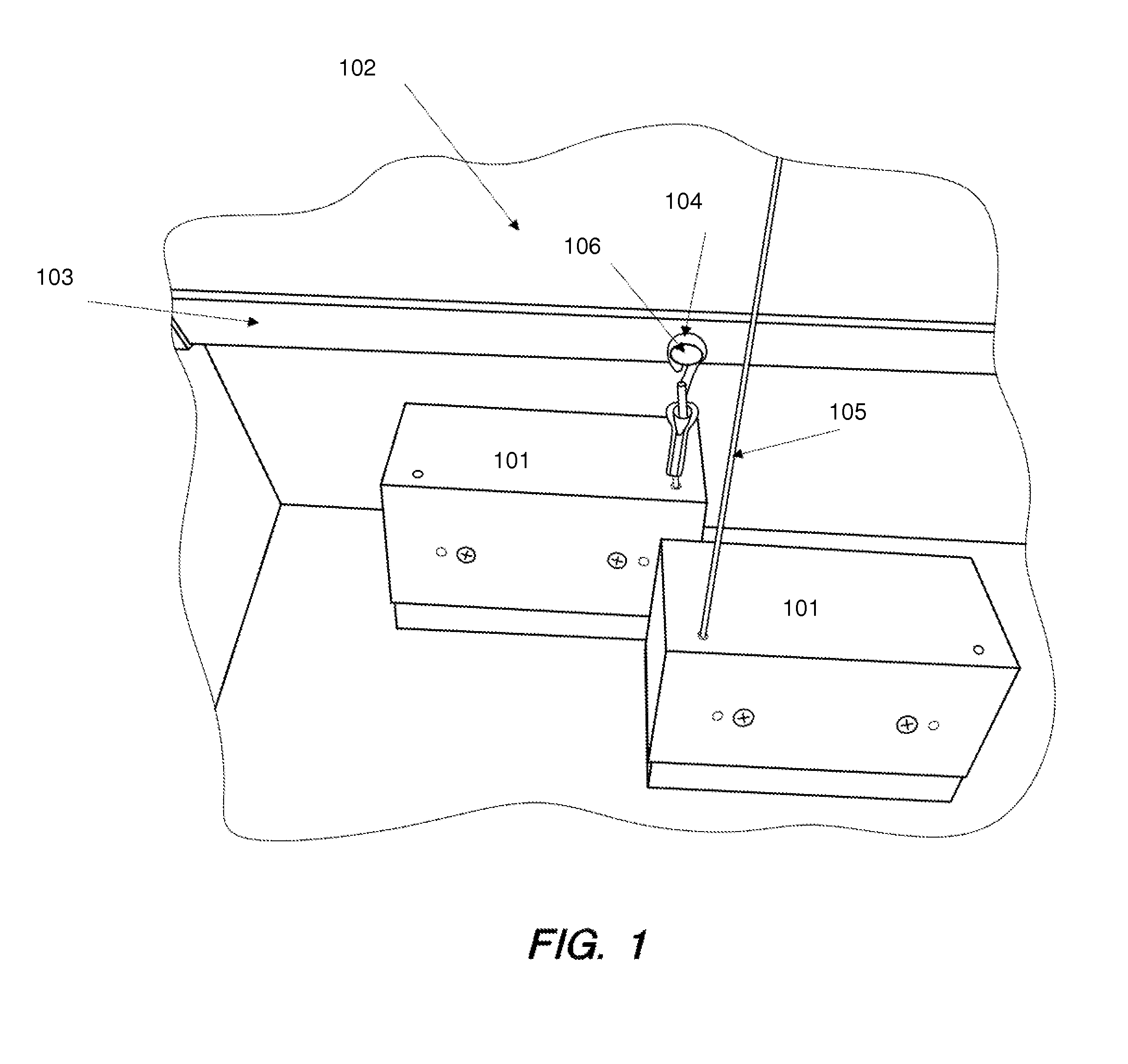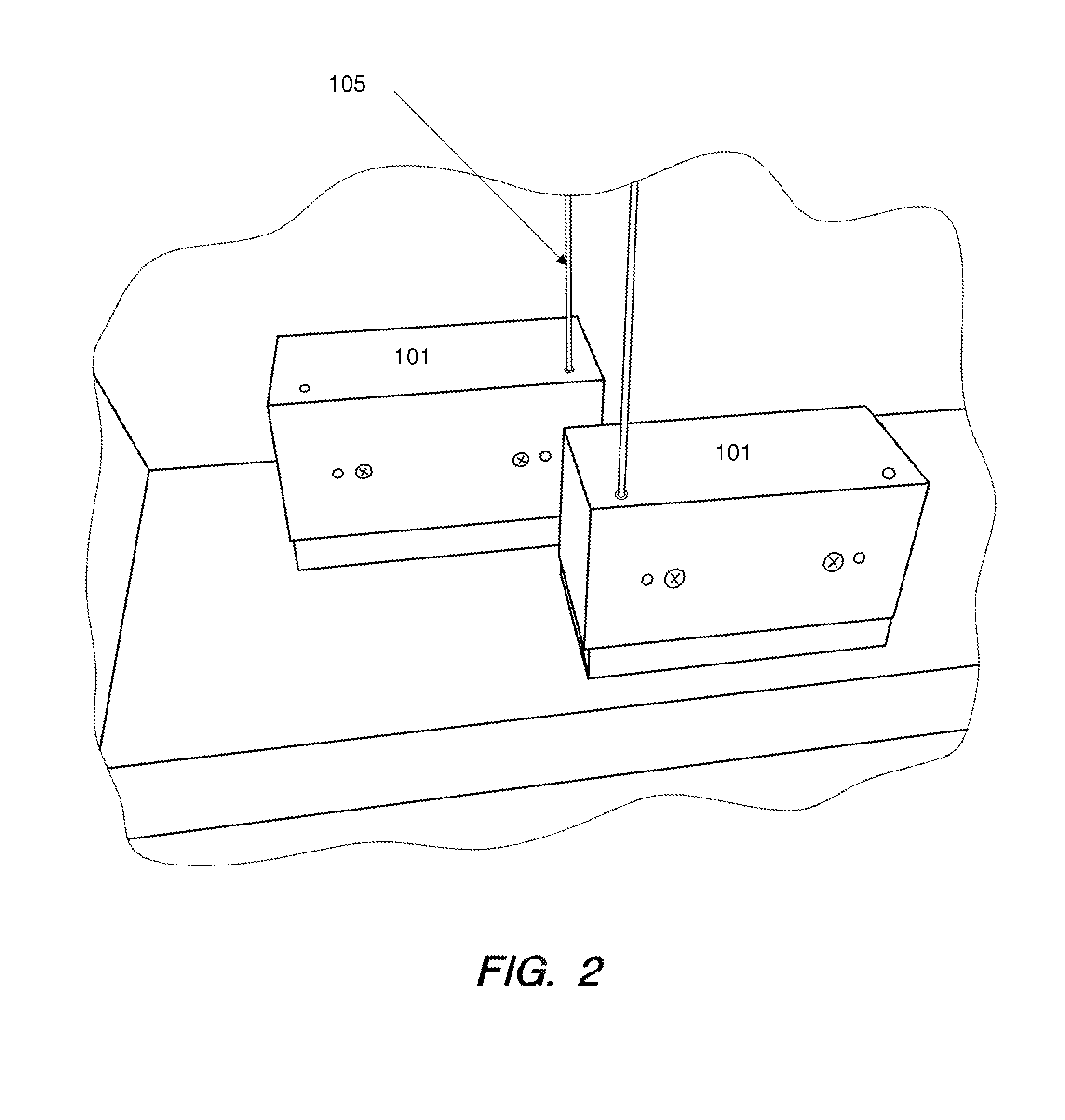Motorized window shade system
a motorized and window shade technology, applied in the field of window shades, can solve the problems of insufficient existing motorized window shade systems, inflexible methods, and inability to adjust the glass angle, so as to prevent the contact of the shade with the glass, avoid accidental breakage, and minimize light reflections
- Summary
- Abstract
- Description
- Claims
- Application Information
AI Technical Summary
Benefits of technology
Problems solved by technology
Method used
Image
Examples
Embodiment Construction
[0018]As shown in FIG. 1 and FIG. 2, the present invention's spring boxes 101 are ideally mounted beneath the level of the windowsill. In addition to being aesthetically preferable, this prevents a horizontal light gap that results from the shade 102 not being fully drawn down to the windowsill due to the spring box 101 height. Otherwise, the shade's bottom hembar 103 draws to a point where it contacts the spring box 101 and can pull down no further.
[0019]Alternatively, the spring boxes 101 can be mounted on their sides in situations where they cannot be recessed beneath the windowsill. The mounting location is ideally centered on the loop 104 attached to the hembar 103 at the hembar stanchion 106. However, this is not an absolute requirement. The spring box cable 105 can then route through one or more free moving, non clutch pulleys (not shown) before attaching to the hembar 103. The final pulley must be centered on the hembar loop 104, and this ensures the shade draws and retracts...
PUM
 Login to View More
Login to View More Abstract
Description
Claims
Application Information
 Login to View More
Login to View More - R&D
- Intellectual Property
- Life Sciences
- Materials
- Tech Scout
- Unparalleled Data Quality
- Higher Quality Content
- 60% Fewer Hallucinations
Browse by: Latest US Patents, China's latest patents, Technical Efficacy Thesaurus, Application Domain, Technology Topic, Popular Technical Reports.
© 2025 PatSnap. All rights reserved.Legal|Privacy policy|Modern Slavery Act Transparency Statement|Sitemap|About US| Contact US: help@patsnap.com



